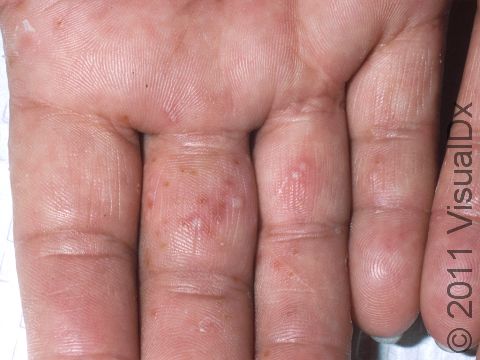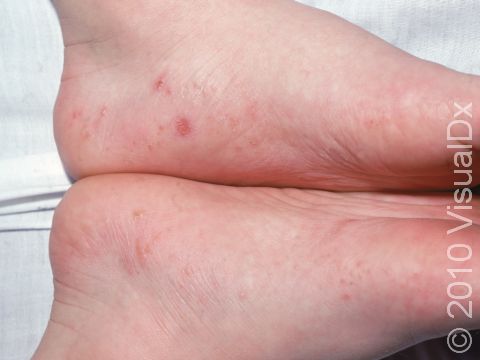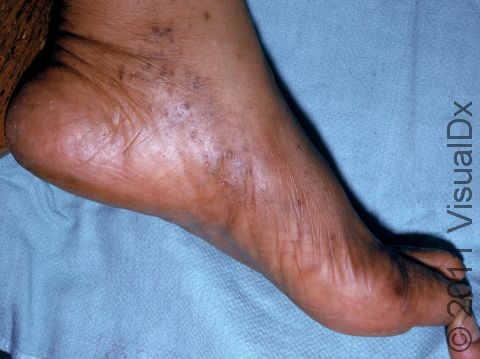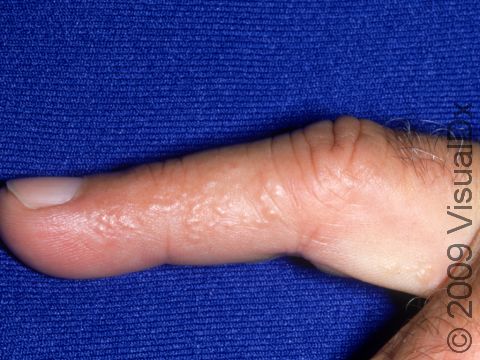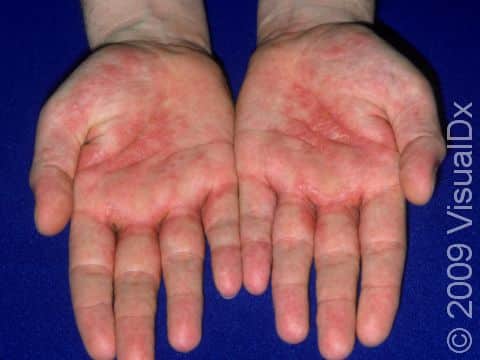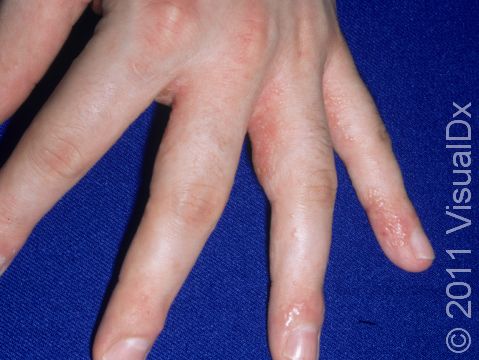Dyshidrotic Eczema
Dyshidrotic eczema (dyshidrotic dermatitis) is an itchy rash that occurs on the hands (usually the palms and sides of the fingers) and/or the feet. Dyshidrotic eczema manifests as small, itchy, fluid-filled blisters.
Sometimes the blisters are very small, like pinpoints, and sometimes they are larger, covering almost the whole palm or foot. The fluid inside the blister can be clear or white to yellow. It is not known what causes this condition, but it is more common in people with eczema. Even in people without sensitive skin, it seems to be triggered by the same things that trigger eczema: cold, dry air, or contact with irritants that bother the skin. In other people, a warm, moist climate may be the trigger.
Who's At Risk?
Dyshidrotic eczema may occur in people of all ages but usually occurs after age 10 years.
Signs & Symptoms
The most common location of dyshidrotic eczema is on the hands and, less commonly, the feet. It appears as:
- Small, fluid-filled blisters (vesicles) on the surfaces of the palms and soles and the sides of the fingers and toes.
- The blisters can appear deep in the skin due to the thickness of the skin on the palms and soles. In severe cases, the small blisters can merge and form bullae (large blisters larger than a thumbnail).
- The blisters may break open, ooze, and form a scaly crust.
Self-Care Guidelines
Avoid anything that irritates the skin in the affected areas. Handwashing with mild soaps or cleansers and frequent application of thick emollient creams (eg, Eucerin, Aquaphor, and CeraVe) and petroleum jelly (eg, Vaseline) may be beneficial. Do not pop the blisters of dyshidrotic eczema because of the risk of infection.
Treatments
To manage dyshidrotic eczema, your medical professional may recommend:
- A topical steroid cream, lotion, or ointment.
- A short course of an oral steroid (prednisone [eg, Rayos]) can be very effective and fast in controlling symptoms and is reserved for severe cases.
- Chronic, severe disease can be treated with a form of ultraviolet light therapy called PUVA (psoralen and ultraviolet A) or narrow-band UVB (ultraviolet B) phototherapy.
Visit Urgency
Seek medical evaluation for a rash on the hands and/or feet that is unresponsive to self-care measures.
References
Bolognia J, Schaffer JV, Cerroni L. Dermatology. 4th ed. Philadelphia, PA: Elsevier; 2018.
James WD, Elston D, Treat JR, Rosenbach MA. Andrew’s Diseases of the Skin. 13th ed. Philadelphia, PA: Elsevier; 2019.
Kang S, Amagai M, Bruckner AL, et al. Fitzpatrick’s Dermatology. 9th ed. New York, NY: McGraw-Hill Education; 2019.
Paller A, Mancini A. Paller and Mancini: Hurwitz Clinical Pediatric Dermatology. 6th ed. St. Louis, MO: Elsevier; 2022.
Last modified on June 13th, 2024 at 3:51 pm

Not sure what to look for?
Try our new Rash and Skin Condition Finder
